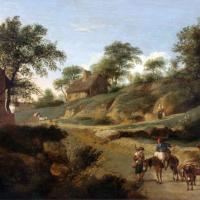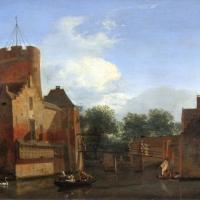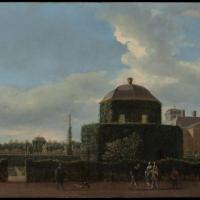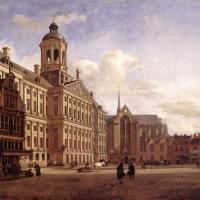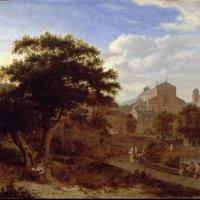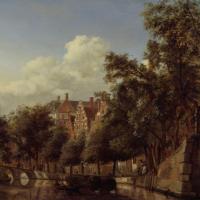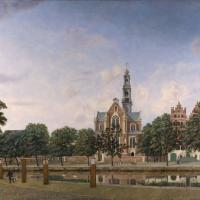Jan van der Heyden
Jan van der Heyden
Jan van der Heyden (5 March 1637, Gorinchem – 28 March 1712, Amsterdam) was a Dutch Baroque-era painter, glass painter, draughtsman and printmaker. Van der Heyden was one of the first Dutch painters to specialize in townscapes and became one of the leading architectural painters of the Dutch Golden Age. He painted a number of still lifes in the beginning and at the end of his career.
Jan van der Heyden was also an engineer and inventor who made significant contributions to contemporary firefighting technology. He improved the fire hose in 1672, with his brother Nicolaes, who was a hydraulic engineer. He modified the manual fire engine, reorganised the volunteer fire brigade (1685) and wrote and illustrated the first firefighting manual (Brandspuiten-boek). A comprehensive street lighting scheme for Amsterdam, designed and implemented by van der Heyden, remained in operation from 1669 until 1840 and was adopted as a model by many other towns and abroad.
Jan van der Heyden was born in Gorinchem, the son of a mennonite father and the third of eight children. His father was by turns an oil mill owner, a grain merchant and a broker. The family moved to Amsterdam in 1646 and van der Heyden’s father acquired local citizenship. Jan van der Heyden himself would never acquire Amsterdam citizenship.
Jan van der Heyden may have received his initial artistic training in the studio of a relative, perhaps his eldest brother, Goris van der Heyden, who made and sold mirrors. He had joined his brother Goris in his mirror producing and selling business.
He may also have learned drawing from a glass painter. It is possible that his teacher may have been one of the most admired glass painters of the time, Jacob van der Ulft, who was also originally from Jan van der Heyden's hometown. Several examples of van der Heyden’s paintings on glass (verre eglomisé) have survived and probably date from this early part of his career.
He married Sara ter Hiel of Utrecht on 26 June 1661 in Amsterdam. At the time of his marriage, he lived on the most fashionable canal in Amsterdam, Herengracht. He was then already a practising artist. His earliest dated works are two drawn portraits of his brother-in-law Samuel ter Hiel and his bride, Jacquemijntje van der Passe date 1659. His earliest dated painting is from 1663.
As a young man he witnessed the fire in the old town hall which made a deep impression on him. He later would describe or draw 80 fires in almost any neighborhood of Amsterdam. In 1668 Cosimo III de' Medici bought one of his paintings, a view of the townhall with a manipulated perspective.
Painting was not the sole occupation and interest of van der Heyden. In fact he never joined Amsterdam's painters' guild. Even while his work was in great demand, he did not rely on his art to make a living. His principal source of income was, in fact, not painting. Rather he was employed as engineer, inventor and municipal official. He was clearly greatly preoccupied with the problem of how to fight fires effectively, and, with his brother Nicolaes, devoted much time between 1668 and 1671 to inventing a new, highly successful water pumping mechanism.
He devised a street-lighting system for Amsterdam and was in 1669 appointed director of street lighting. In 1673 the two brothers received official appointments to manage the city’s fire-fighting equipment and organisation. The two officials appointments were sufficient to ensure the prosperity of the artist.
Jan van der Heyden moved in 1680 to the Koestraat near the St. Anthonismarkt. Here he built a new family home and a factory for producing fire equipment. In collaboration with his eldest son Jan, he published in 1690 an illustrated book on fire-fighting, entitled 'Beschrijving der nieuwlijks uitgevonden en geoctrojeerde Slangbrandspuiten' ('Description of the recently invented and patented hose fire engines').
Jan van der Heyden died a wealthy man in 1712. His wife survived her husband by only a month. The inventory of the estate made soon after her death include more than 70 of his own paintings. His only known pupil is his son Jan.



